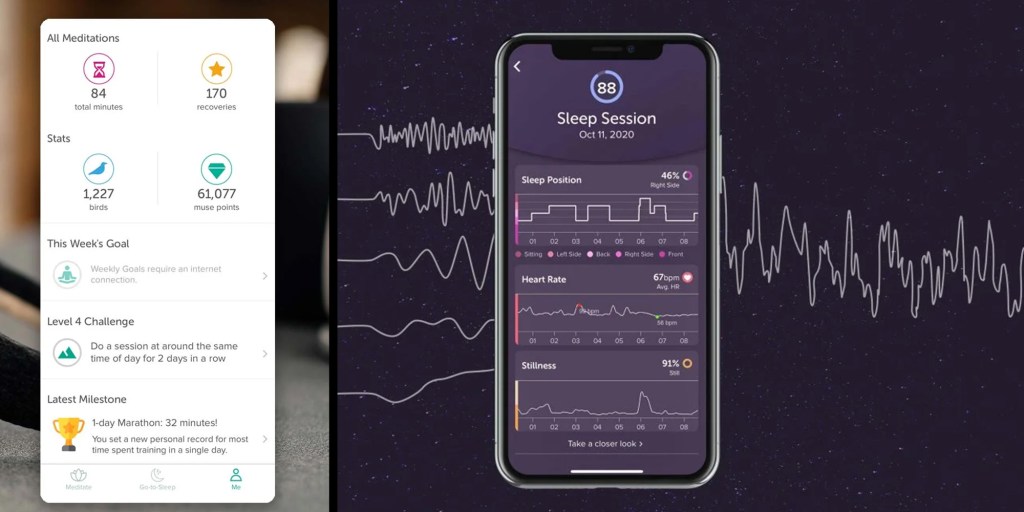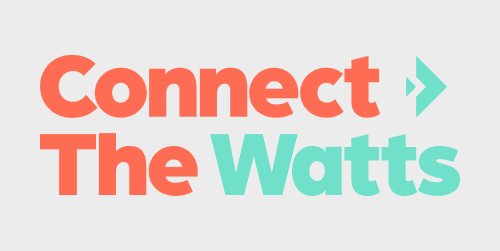
Following the fall launch of the second-generation Muse S headband, I was able to try one out for myself and see what this “digital sleep pill” was all about. In addition to testing the Muse S headband’s non-pharmaceutical sleep support, I also took a look at its meditation guidance to find that inner peace we all long for. Here’s how it went.
Table of contents
The Muse brand
Muse is a Toronto-based neurotechnology brand under the Interaxon Inc. umbrella specializing in using Electroencephalography (EEG) technology to support healthy sleep and meditation practices.
The company already has over 500,000 “Musers” around the globe and has delivered over 100 million minutes of meditation sessions using its products. Muse’s team of neuroscientists, meditation teachers, and engineers has brought two products to market – the Muse 2 meditation headband and the Muse S designed for sleep support.
The Muse S headband (second generation)
Last October, the company launched its second-generation Muse S sleep headband, which features an updated plush band that uses real-time biofeedback from your brain to help you fall asleep and stay asleep.
The Muse S works by utilizing what the company calls “Digital Sleep Pills” (DSPs). These DSPs use audio cues to initiate a natural wind-down process, responding to your brain’s rhythms to help you disengage from your busy mind as you lie in bed.
I got the chance to become a “Muser” myself and share my thoughts on the Muse S headband.
Setup
As you can tell from the unboxing video above, the Muse S Headband comes pretty much ready to go, pending a charge to the front pod module using a standard Micro USB cable (provided). Charging is relatively quick, and I could definitely go days without replenishing the device, depending on how often or long I used it.
While the Muse S itself functions through the pod module attached to your headband, you’ll need to install the Muse app to complete the setup and operate its functions. It’s an easy free download from the iOS and Android stores to your smartphone.
To begin a session, you have to turn on the device and get it properly (and comfortably) fitted to your head. Sensors on the headband must sit flush with your forehead and areas above your ears in order for the device to operate effectively.
When I first started, I had a bit of trouble getting the sensors above my ears to sit correctly so the Muse module could register them. It could have been my long hair, but I was eventually able to figure out the correct positioning.
When you’re getting set up, the Muse app has a visual representation of all the sensors including your heart rate, so you can see what’s registering and what isn’t. Muse will not allow you to choose a meditation or sleep session until all the sensors are working correctly, so it may take some fidgeting to get it right, especially at first.
Next, connect your headphones to your smartphone, choose a program and voila! Instant zen… well sort of.

The Muse S Headband content
The second generation of the Muse S headband, especially, offers a lot in terms of relaxation, meditation, and an overall clearing of a racing mind (a huge issue for yours truly).
As a meditation device, the Muse app can help you find your focus in key physical areas of the body (mind, heart, body, lungs), timed sessions, or guided meditations for those of us who need a little help getting settled.
Simply choose the length you’d like (3 to 45 minutes), a soundscape (rainforest, river, birds, campfire to name a few), and a particular exercise (if applicable). I personally preferred the guided meditations to start because I could target specific inhibitors in my life like stress or promote others like calm, all to cues from an expert. From there, I ventured out into my own meditations like lungs, where I could truly focus on my breathing to center myself and focus within.
I found that morning meditations worked best for me, as my mind was already clear from slumber and had not begun to race from my list of to-dos, or the messages that were awaiting me when I looked at my phone. It also helped if I was still wearing the Muse S Headband from a sleep session the night before.
Sleeping with the Muse S Headband
A big reason I wanted to try this device was because of its “digital sleep pill” technology and its potential as a non-pharmaceutical alternative to effective sleep.
That’s the main reason I wanted to review this product for you as well, because sleep is just as important, if not more, to your overall health and wellbeing as cardio and other forms of exercise. As a result, I consider the Muse S Headband a health and fitness product.
I’ll admit I was skeptical of this device at first, and I felt a little silly putting it on the first time. However, after an initial five-minute introduction journey, I was intrigued. That first night, I followed up with a sleep journey called “Gentle River” to see what a DSP felt like.
Like a patient lying on the table getting anesthesia, I thought there was no way I’d feel the effects and was wide awake. Next thing I knew, it was morning. I had slept eight straight hours with the data to prove it – 46 minutes in deep sleep, 25 minutes of REM, and 6.5 hours of light sleep.
The Muse S Headband measured other metrics like my heart rate and sleep position throughout the night, as well as my stillness level, offering me a final score of 42/100 for the evening. Clearly, I had some work to do.
While the DSPs were impressive, I found the next morning’s data and its compiled averages to be most beneficial in tracking my sleep patterns. While the headband has worked for me most of the time, not all its content has been as effective.
Pros and cons
While I have been thoroughly impressed by the Muse S Headband, it is not a perfect device. At least not for me. I was originally under the impression that the device came with headphones specifically designed for sleep.
Instead, you must use your own headphones. Not a problem, but I wouldn’t consider my earbuds particularly comfortable for sleep, especially if you’re a side sleeper. A minor issue, but sometimes it was hard to center myself when I was focusing on the feeling of the headphones in my ears. So find yourself a comfy pair!
While there have been plenty of nights the Muse S has quickly whisked me away to dreamland, that has not always been the case. I’ve had restless nights where my mind is going over a million things at once, all while three different songs are playing on repeat, and I’ve turned to the device to get everything in my head to STFU.
I found that the sleep soundscapes just added ambient noise to the turmoil going on in my brain and didn’t relax me as much. Plus as I would settle, the volume would lower, which was nice. However, even the slightest movement to readjust or shift would send that volume way back up, making for further distraction.
On nights like these, I found that Sleep Journeys with a person speaking and guiding me toward sleep were much more effective. I found I could focus on the speaker’s voice and directions alone, and the other nonsense could drift away along with my consciousness.
Lastly, I think $399.99 for this device could be a deterrent for some consumers, especially those who are unsure if it will work for them. That being said, dishing out dozens of dollars on melatonin gummies or prescription sleep pills each month adds up and may not be as healthy for your body or its sleep cycle.
This device may come at a higher upfront cost, but its content can be continuously updated through the app.
Try out the second generation Muse S Headband for yourself
Having trouble sleeping like me? Looking to get into a daily meditation routine to improve your overall mental health and well-being, or simply interested in seeing what a digital sleep pill feels like?
Try out the second-generation Muse S headband for yourself and let us know what you think. It starts at a price of $399.99 for the device only. For $10 more, you can get the bundle that includes an annual premium subscription, unlocking additional content in the Muse app.
FTC: We use income earning auto affiliate links. More.


